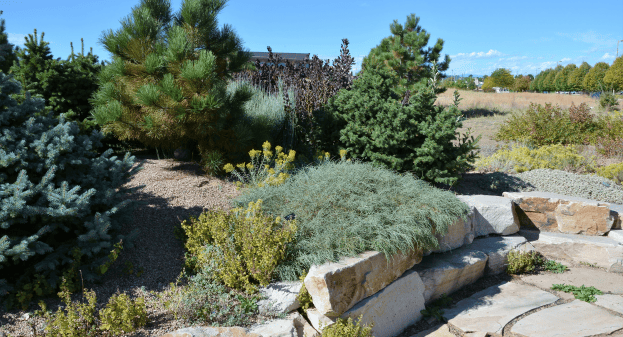In the arid climate of Denver, water conservation has become a top priority for both homeowners and commercial property managers. One effective and sustainable landscaping solution gaining popularity is xeriscaping. Derived from the Greek word “xeros,” meaning dry, xeriscaping is a water-efficient landscaping method that not only conserves water but also enhances the beauty and functionality of outdoor spaces. In this blog post, we’ll delve into the basics of xeriscaping, exploring its benefits and providing essential best practices.
Benefits of Xeriscaping
Water Conservation
Denver is no stranger to water scarcity issues, making water-efficient landscaping crucial. Xeriscaping significantly reduces water usage by incorporating drought-tolerant plants, minimizing the need for extensive irrigation systems.
Cost Savings
With xeriscaping, property owners can expect substantial savings on water bills. The reduced need for constant watering and maintenance results in long-term financial benefits.
Low Maintenance
Xeriscaped gardens require minimal upkeep compared to traditional landscapes. Drought-resistant plants are hardier and more resilient, reducing the time and resources spent on maintenance.
Environmental Sustainability
By opting for native, drought-resistant plants, xeriscaping promotes biodiversity and supports local ecosystems. This environmentally friendly approach contributes to the overall health of the community.
Increased Property Value
A well-designed xeriscape not only enhances the aesthetic appeal of a property but also increases its market value. Potential buyers and tenants appreciate the lower environmental impact and cost savings associated with xeriscaped spaces.
Best Practices for Xeriscaping
Site Analysis
Before embarking on a xeriscaping project, conduct a thorough site analysis. Consider factors such as soil type, sunlight exposure, and slope to determine the most suitable plants and design elements for the property.
Water-Efficient Plants
Choose native and drought-tolerant plants that thrive in Denver’s climate. Examples include Colorado Blue Spruce, Rocky Mountain Juniper, and various types of native grasses. These plants are adapted to local conditions and require minimal irrigation.
Efficient Irrigation
When irrigation is necessary, opt for efficient methods such as drip irrigation or soaker hoses. These systems deliver water directly to the base of plants, minimizing water waste through evaporation and runoff.
Mulching
Apply a layer of mulch around plants to conserve soil moisture, suppress weeds, and regulate soil temperature. Organic mulches like bark or wood chips are excellent choices for xeriscaped gardens.
Group Plants Strategically
Grouping plants with similar water requirements helps optimize irrigation efficiency. By placing plants with higher water needs together and those with lower water needs in a separate area, you can tailor your watering practices more precisely.
Contact DCPS for Xeriscaping
Xeriscaping is a sustainable and practical landscaping solution. By understanding the benefits and implementing best practices, you can create beautiful, water-efficient landscapes that contribute to the well-being of the environment and the bottom line. As the demand for eco-friendly and cost-effective landscaping solutions grows, embracing xeriscaping is a forward-thinking choice that aligns with the values of both property owners and the community at large. Contact DCPS today to see how we can help!

